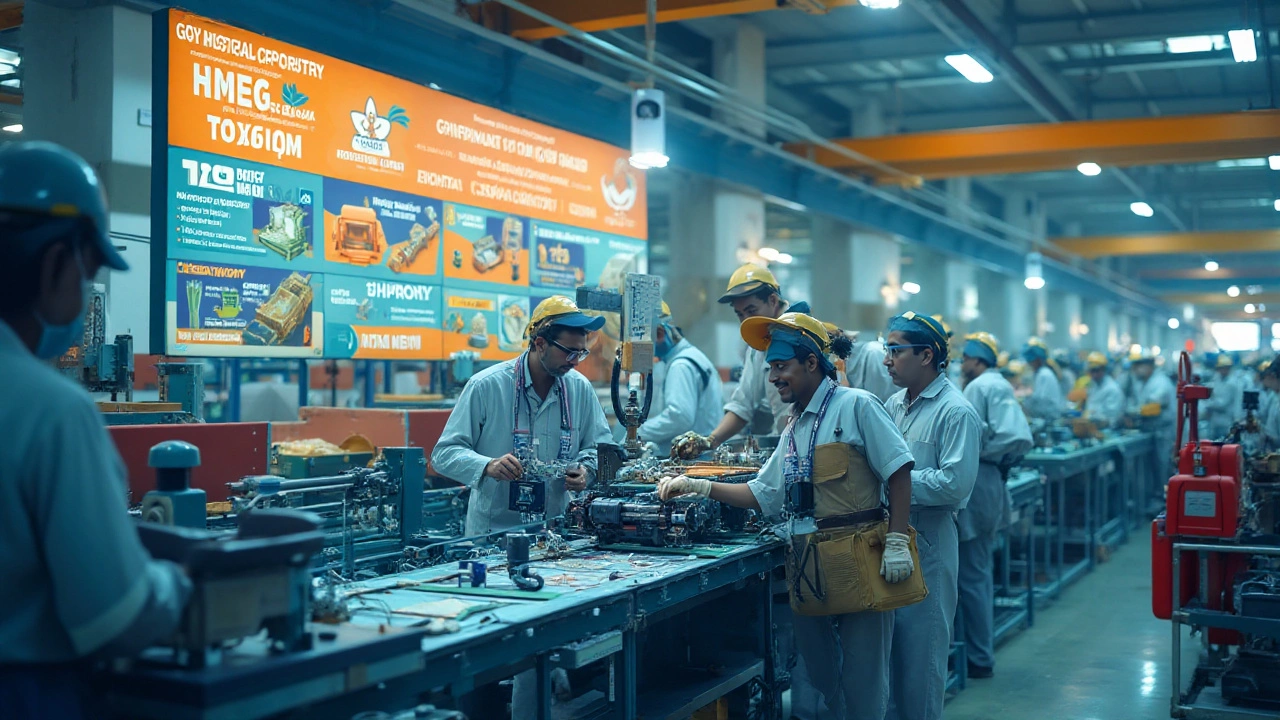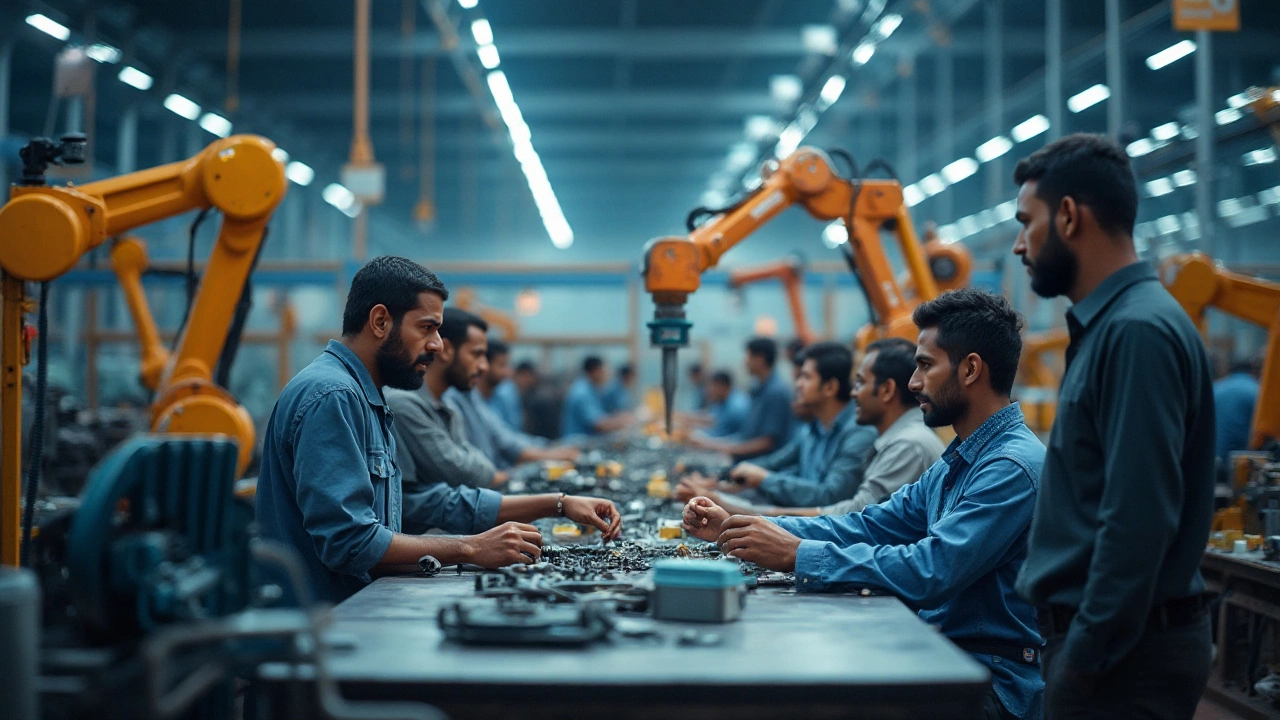Government Schemes for Indian Manufacturing – Benefits, Eligibility, and How to Apply
India’s manufacturing sector is waking up fast, and the government is handing out tools to keep that momentum going. If you run a small plant, a startup, or a mid‑size factory, there’s probably a scheme that can cut costs, give you cheap credit, or fund new equipment. The trick is knowing which one fits your business and how to claim it without getting lost in paperwork.
Major Schemes You Should Know
Make in India is the umbrella program that encourages local production. It offers tax breaks, easier land acquisition, and faster clearances for projects that create jobs. If your product aligns with the priority sectors (automobile, electronics, pharma, etc.), you can apply through the Ministry’s portal and get a single window for approvals.
Production Linked Incentive (PLI) rewards manufacturers for meeting volume targets. For example, the electronics PLI gives up to 6% of sales as a cash incentive if you hit the export or domestic sales quota. The scheme is open to both Indian and foreign companies that set up or expand plants in India.
Technology Upgradation Fund Scheme (TUFS) is aimed at textile and apparel producers. It provides low‑interest loans to upgrade looms, install modern dyeing units, or adopt eco‑friendly processes. The loan covers up to 40% of the cost, and the interest subsidy can bring the effective rate down to 4%.
Credit Guarantee Fund for Micro and Small Enterprises (CGMSE) helps you get bank loans without personal collateral. The government guarantees up to 75% of the loan amount, which means banks feel safer lending to you. You can apply through any participating bank and use the funds for working capital, equipment purchase, or expansion.
Startup India Fund offers seed funding and mentorship for tech‑driven manufacturing ideas. If you have a prototype that uses AI, IoT, or renewable energy in production, you can pitch for up to INR 1 crore in non‑dilutive support.
How to Apply and Maximize Benefits
First, map your business needs to the scheme’s objectives. Does your plan involve scaling up output? Then PLI might be the best fit. Need new machines? TUFS or CGMSE could be cheaper than a regular loan.
Next, gather the core documents: company registration, PAN, GST, detailed project report, and financial statements for the last two years. Most portals now have a checklist, so keep it handy to avoid back‑and‑forth with officials.
Third, use the single‑window portals like MSME Samadhaan or PMEGP to submit applications. Upload PDFs, fill in the online form, and track status in real time. If the portal asks for clarifications, reply within the given deadline—delays often lead to missed incentives.
Finally, plan for compliance. Many schemes require periodic reporting on job creation, export volume, or technology adoption. Set up a simple Excel sheet at the start, update it quarterly, and you’ll have the data ready when the audit comes.
By matching the right scheme to your need, preparing documents early, and staying on top of reporting, you can turn government support into real savings and growth. Keep an eye on new announcements; the policy landscape changes every budget, and today’s small incentive could become tomorrow’s game‑changer for your manufacturing business.

Manufacturing’s Impact: How Government Schemes Shape Our Everyday Life
Manufacturing isn't just about factories and machines—it's the engine behind daily life, jobs, and the stuff we use. This article breaks down how government schemes focused on manufacturing affect the way we live. Get real facts about job creation, innovation, and even unexpected places where these policies show up. Discover tips for families and workers on making the most out of changes in the industry. If you’ve ever wondered why your fridge, car, or phone keeps getting cheaper (or sometimes not), you’ll find answers here.
Read More
Manufacturing Money: Is There Real Cash in Government-Backed Production?
This article digs into whether manufacturing is still a goldmine—especially with all the government schemes floating around these days. You'll see what sort of cash flow is actually possible and where the profits really come from. It also uncovers which subsidies or incentives might tip the scales and what pitfalls to dodge. If you’re thinking about getting into manufacturing or just curious, this no-nonsense read clears up the money side fast.
Read More
Manufacturing's Vital Role in Society
Manufacturing companies play a pivotal role in society by driving economic growth, providing jobs, and fostering innovation. They are at the heart of community development and contribute to infrastructure improvements. Government schemes often support these enterprises, helping them to remain competitive and sustainable. Overall, manufacturing is a cornerstone of both local and global economies.
Read More
Best U.S. States for Manufacturing: Where to Build Your Factory
Choosing the best state for building a factory involves a mix of tax incentives, infrastructure, and workforce availability. Some states offer appealing government schemes, making them hotspots for manufacturers. Proximity to supply chains and market access are also crucial factors. Manufacturing hubs often have robust logistics support. To make an informed decision, weighing economic benefits against geographical location is key.
Read More
How Manufacturing Fuels National Economic Growth
Manufacturing plays a pivotal role in boosting a country's economic stability by creating jobs, enhancing technological advancements, and stimulating investment. Government schemes often act as catalysts by providing incentives and favorable policies to promote industrial growth. The presence of a robust manufacturing sector can help improve infrastructure and increase exports. This article explores the multifaceted ways manufacturing contributes to a nation's well-being and progress.
Read More
Understanding Government's Role in the Manufacturing Sector
Manufacturing is a critical component of any economy, and understanding which government department oversees this sector can influence the effectiveness of related government schemes. This article explores the various government bodies responsible for manufacturing, how they work to promote industry growth, and the significance of these departments in implementing successful economic policies. By understanding the role of government in manufacturing, businesses can better navigate available resources and incentives.
Read More
The Impact of Manufacturing on American Society and Economy
Manufacturing drives innovation, supports a resilient supply chain, and creates economic opportunities across the United States. As a crucial sector, manufacturing shapes society by stimulating technological advancements and fostering job creation. Government initiatives play a significant role in facilitating growth and addressing emerging challenges in this domain. Discover the multifaceted contributions of manufacturing to American society and the economy.
Read More